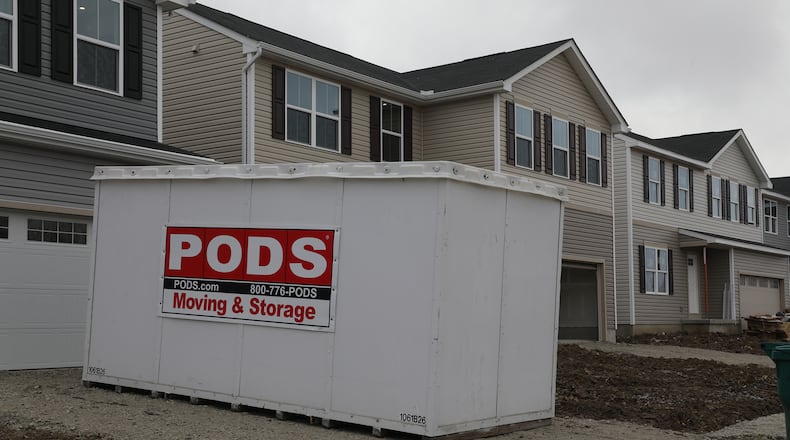Due to COVID-19, some people decided to relocate for safety or financial reasons or to be closer to family.
“Obviously, this past year was very unique due to the COVID-19 pandemic and so many people (were) looking to move out of densely populated areas to less-crowded areas and/or move closer to family to care for them,” said Jeff Lockridge, manager of media and public relations with U-Haul International.
In 2020, Ohio ranked among the top five moving destinations for the first time in five years, according to U-Haul data.
The Buckeye State ranked third in the nation for net migration in 2015, the company said, but it tumbled to the 40th spot the following year.
Since then, Ohio has climbed the rankings. It was the 34th most popular destination in 2017; the 15th in 2018; and the 7th in 2019.
U-Haul determines the rankings by comparing the number of one-way trucks that enter a state, compared to the number of trucks that leave.
One-way U-Haul trips to Ohio increased 8% last year last year, while departures increased 7%, the company said.
U-Haul says its migration trends do not directly correlate to population or economic growth, but they suggest how effectively states and cities are attracting and maintaining residents.
Why move
There likely have been some temporary moves during the pandemic, like students moving in with their families and older adults moving in with children, said William Frey, senior fellow with the Metropolitan Policy Program at The Brookings Institution.
But the main driver of migration in the long term is jobs, Frey said, and migration patterns could change, depending based on how each region adapts to the post-pandemic economy.
About six in 10 adults who relocated during the pandemic said they moved in with family, including parents, in-laws or their adult children, according to a June 2020 survey by the Pew Research Center.
Other people moved in with friends or relocated to second homes or vacation homes, Pew said.
About 28% of adults who moved said they relocated primarily to reduce the risk of getting sick.
Other primary reasons for moving during COVID-19 included college campus closures (23% of respondents), desire to be with family (20%) and job losses and other financial concerns (18%).
U-Haul said last year Springfield, Miamisburg and Huber Heights were among Ohio’s high-growth migration cities.
Year-over-year, Miamisburg saw a 7% increase in arrivals and a 4% increase in departures, while Springfield saw a 22% increase in arrivals and a 14% increase in departures, said Lockridge, with U-Haul International.
Springfield is a great community to live in and raise a family, offering cultural amenities like museums, the symphony, indoor and outdoor entertainment venues, parks and greenspace and miles of bike trails, said Tom Franzen, Springfield’s assistant city manager and director of economic development.
The city has a rejuvenated downtown, featuring a new brewery, coffee shops, bakeries, restaurants and artist lofts, and it is home to beautiful architecture, he said.
Springfield welcome two new employers recently, Topre America and Silfex Inc., which created over 800 new jobs within roughly the last three years, Franzen said.
Established companies Speedway, Cascade, Konecranes and many others have seen steady growth, he said, and the city commission has offered significant incentives to attract developers and residential buyers to address a shortage of available housing.
“We’ve seen a major increase in new housing starts fueled by a couple of large housing developments, which began at the start of the pandemic,” he said.
Franzen said Bridgewater ― a Ryan Homes subdivision ― saw record home sales and first-of-their kind downtown townhomes called Center Street Townes also sold very quickly.
“Interest from residential developers remains robust with Redwood Apartments announcing their intentions to build a 94-unit development in 2021 and we’re currently working with other interested developers,” he said.
Huber Heights experienced a 27% increase in arrivals and a 23% increase in departures, he said.
Huber Heights has seen steady population growth for multiple years, and the U-Haul data supports the city’s belief that investing in quality-of-life amenities reduces outmigration and attracts new residents, said Bryan Chodkowski, Huber Heights assistant city manager.
Huber Heights has a great location, situated along Interstate 70 and close to Interstate 75, which is a 5- to 10-minute drive from Wright-Patterson Air Force Base, Chodkowski said.
Huber Heights has a diverse local economy, strong local school districts, a vast array of housing choices and amenities like the Rose Music Center, Kroger Aquatic Center and a partnership with the Greater Dayton YMCA, he said.
About the Author

